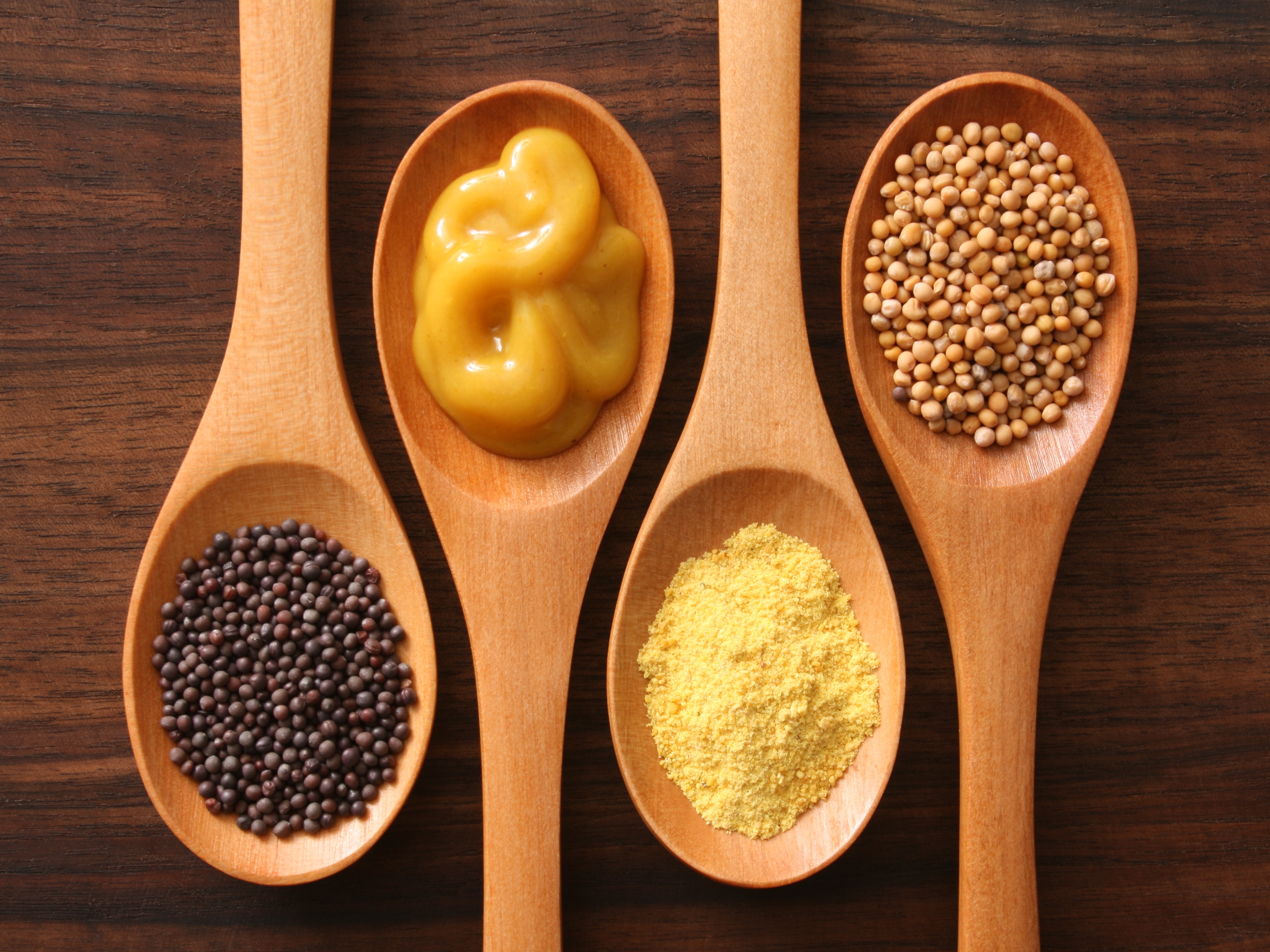Mustard
There are a number of mustard species around the world within the brassica category. In French, we say la moutarde. Mustard can be categorized as an herb, a spice, a vegetable--and a condiment!
From the mustard plant, we use mustard seed, mustard greens (a.k.a. curly mustard), and mustard oil in the culinary world.
Yellow mustard is mostly used for condiments and other food processing. Brown mustard is mainly shipped to the European market for condiments. The French city of Dijon is famous for its mustard but in fact much of the mustard seed is Canadian! Japan is the main market for oriental mustard but other Asian cuisines use it for spicy dishes too.

More on Mustard
Growing
Mustard is closely related to canola. Both grow well in our prairies, both produce a yellow flower and both can be quite strong as seeds. Canada produces three mustard types: yellow, brown, and oriental.
Canada is a world leader in condiment mustard accounting for 70-80% of global exports, annually. Like other highly exported products, mustard also has a quality standard as preserved by the Canadian Grain Commission (CGC). The Canadian Identity Preserved Recognition System to make sure that suppliers meet the quality standards.
History
Different species originate from India, the Himalayas, and the Mediterranean region.
In Canada, most mustard comes from either southern Alberta and Saskatchewan. Early settlers to Canada had the skills and know-how as to cultivating and using mustard not only in the kitchen but also for its medicinal purposes.
Fun Facts
Another note on Dijon: There is no designation that says that Dijon mustard must be produced in Dijon.
Mustard is a favourite low calorie and high flavour condiment!
Ways to Cook
The seeds are dried and used whole or ground as a spice. Mustard oil is derived from the seeds and is extremely pungent! (Remember studying mustard gas in from WWI history?) It is known in Indian cuisine.
Mustard seed can be brined and made into prepared mustard--the sauce or condiment. Dried mustard is widely used in meat rubs, salad dressings, marinades, curries, and cold sauces. Once prepared into a paste, mustard is used as an emulsifier. It contains lecithin which is needed for water molecules to bind with oil molecules like with a permanent emulsified dressing.
Mustard tastes very spicy. It can be used to add "heat" to a dish as would pepper, wasabi, fresh radishes or horseradish. A little goes a long way. It is good to always have Dijon mustard on hand and one spoon can boost up the flavour of all sorts of dishes. That's why we often use honey in conjunction with mustard--to balance things out and build layers of flavour. Mustard powder can be dangerous on its own. The heat is neutralized with water and/or acid like vinegar.
Prepared Mustard
The three types of mustard seed make 11 types of prepared mustard; Yellow, Dijon, Whole Grain (a.k.a. Meaux), German, Hot, French (from England not France!), Honey, Spicy Brown, Beer, Grey Poupon and Creole.
Cooking Mustard Greens
Now, the green of the mustard plant are edible too. They also have a spicy taste. Cook them similarly to other leafy greens but, again, be aware of their strong taste. Some liken it to bitter kale or a more pungent version of arugula.
